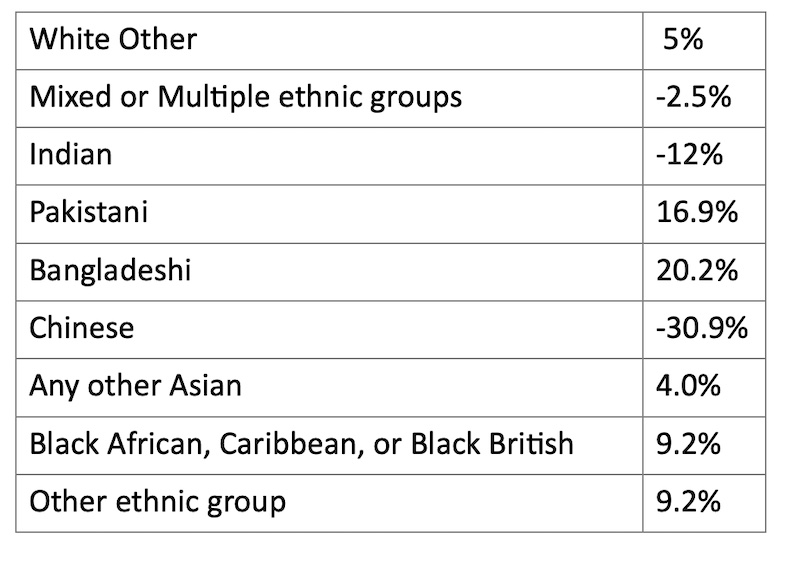New ethnicity pay gap reporting guidance: what you need to know
On 17 April, the government published new guidance on ethnicity pay gap reporting and action in the workplace.
The guide, published by the Race Disparity Unit, Equality Hub and the Department for Business and Trade, is part of an update on the government’s progress in its Inclusive Britain action plan. The aim of the guidance is to develop a consistent, methodological approach to ethnicity pay gap reporting.
No legal requirement to disclose
Unlike gender pay gaps (GPG), there is no legal requirement for UK businesses to disclose their ethnicity pay data. In 2017, a government commissioned review examined the progression of ethnic minority groups in the UK labour market with a key recommendation to introduce mandatory ethnicity pay gap reporting for organisations with 50 or more employees.
For clarification, the pay gap reporting covered is not the same as equal pay for undertaking the same or work of equal value, which is unlawful, but a comparison of average pay gaps irrespective of legitimate compensable factors such as job grade, responsibilities, skills, and experience.
Initially the UK Government rejected the recommendation, stating that it preferred a voluntary, non-legislative approach, but in 2018 the Department for Business, Energy and Industrial Strategy launched a consultation in which it recognised that “it is time to move to mandatory ethnicity pay reporting”.
That consultation closed in January 2019 and no government response was published. Therefore these new guidelines are in effect the first response since.
Ethnicity pay gaps in the UK
With no mandatory reporting or data collection, the only national data source we can reference is the ONS Ethnicity Pay Gap data, with the last available data set from 2019 which examines the different ethnic groups in England, Scotland and Wales.
In this study the pay gap is calculated as the difference between the average hourly earnings of White British and other ethnic groups as a proportion of average hourly earnings of White British earnings. So, a positive pay gap indicates an ethnic group is paid less than those employees categorised as White British, while conversely a negative pay gap indicates an ethnic group is paid higher.
The data shows significant disparities between the averages paid to White British workers and those from other ethnic backgrounds. The findings were based on comparisons using the 10-category ethnicity breakdown were complex with three ethnic groups: Chinese, Indian and Mixed/Multiple ethnic group which were paid higher on average than White British as shown below.

The ONS study also modelled different factors that may affect pay, for example, certain ethnic groups may be more inclined to settle in certain areas of the country and pay may differ between regions.
One observation was the difference in pay between UK born and non-UK born employees, indicating the potential impact a UK education and the higher likelihood of speaking English as a first language may have on earnings.
How useful is the new guidance?
The new guidance (including the methodology for the calculations) mirrors the approach set out in the regulations for gender pay gap regulations. The intention here was to help businesses avoid having to run separate processes to collect the pay data required to run both the gender and ethnicity pay gap calculations. However, it does not address the concerns over the current methodology of GPG reporting.
The key reporting measures recommended are:
- Percentage of each ethnic group in each hourly pay quartile
- Mean (average) ethnicity pay gap using hourly pay
- Median ethnicity pay gap using hourly pay
- Percentages of employees in different ethnic groups in an organisation
- Percentage of employees who did not disclose their ethnicity – they either answered ‘prefer not to say’ or gave no answer .
The last two measures are critical. Reporting on ethnicity can be more complex due to the number of potential categories of ethnicity and issues of parentage, nationality, heritage and self-identification.
For those who have undertaken voluntary reporting, lack of ethnicity data has led to issues over groups being too small for statistical significance and/or to prevent individual employees from being identified.
This guidance does provide updated guidance on collecting ethnicity data and recommends using the Government Statistical Service harmonised standards. When collecting data, it is also important to be mindful of the requirements of the Data Protection Act 2018 and the General Data Protection Regulation.
There is an expectation that these guidelines will shape future mandatory legislation. So, acting now to gather data and start reporting makes sense.
Increase in reporting unlikely
There is unlikely to be a significant increase in voluntary reporting. Analysis of data from BITC found that it could take until 2075 for companies currently capturing ethnicity pay gap data to publish what their pay gap is.
And the analysis also found that unless the government makes ethnicity pay gap reporting mandatory, it will take 30 years (2051) for businesses to even know what their pay gaps are.
Employers only respond once mandated, and even when that happens, progress is slow. With six years of mandatory gender pay gap reporting in the UK complete, real progress has been elusive and unfortunately average gender pay gaps have not closed, despite many leading employers taking positive action and making gains.
The alternative is to hope that increasing stakeholder pressure to fulfil environmental, sustainability and governance strategy commitments, along with increasing demands from employees for pay transparency, will act as drivers for employers to take action.
Ultimately, pay gaps need to be analysed to gain critical insights of where we have come from and identify where we want to go, then we can set better goals and actions to improve both pay equity and equal opportunity for pay progression for all.
Watch our recent webinar to find out more about how Payscale can help you close pay gaps and drive equality in your workplace.
Supplied by REBA Associate Member, Payscale
At Payscale we provide technology solutions and services for companies to manage their compensation data/survey participation, job/grade pricing, compensation reviews and pay equity analysis.








